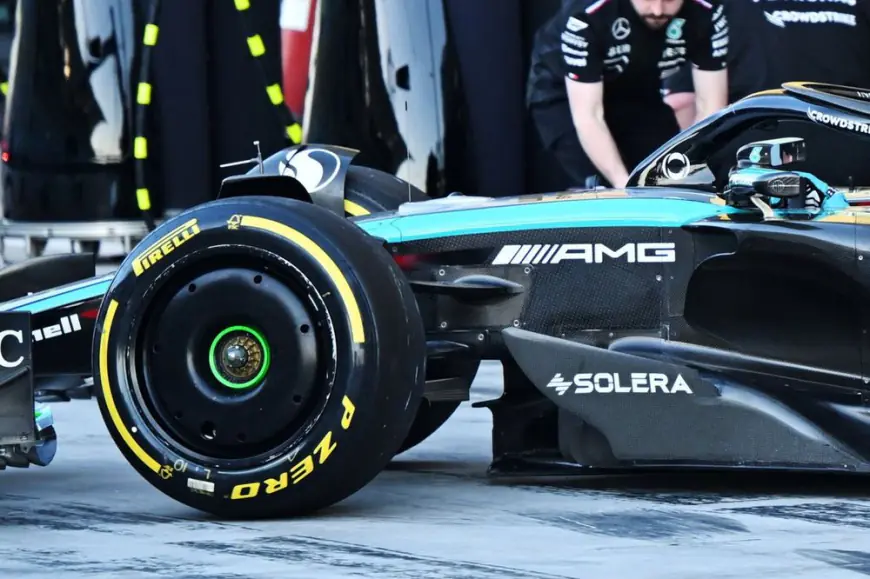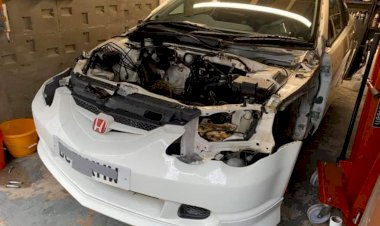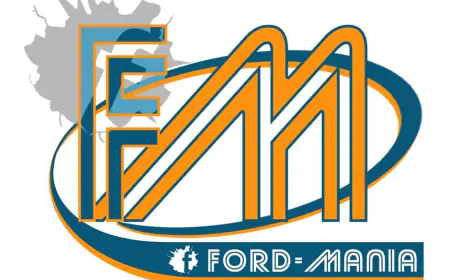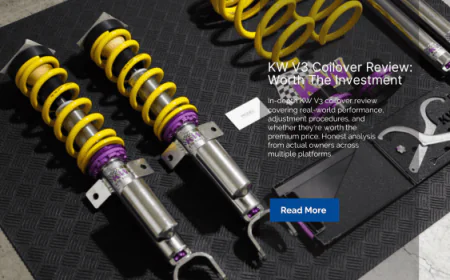Mercedes Unveils Adaptable Suspension: A Game Changer for the W15?
Mercedes' new W15 F1 car boasts an innovative adaptable suspension system. This article delves into the potential benefits of this technology, its impact on the 2024 season, and the broader implications for F1 car design.

Stay updated with the Latest Car News, in-depth Car Features, and expert Insights.
Submit Your Car Build Stories Here!!
Order Your Printed Magazine Here!!
The world of Formula One is constantly pushing the boundaries of technological innovation, and Mercedes has once again made waves with the reveal of a novel adaptable suspension system on their 2024 contender, the W15. This article explores this groundbreaking technology, examining its potential impact on the upcoming season and the broader landscape of F1 car design.
A Peek Under the Hood: Unveiling the Adaptable Suspension
While details remain scarce surrounding the exact workings of the new suspension, images released by Mercedes showcase an additional upper rear wishbone leg. This unique design, as speculated by technical experts, allows the team to adjust the inboard end of the suspension leg.
This adjustability offers several potential advantages. One key benefit could be the ability to fine-tune the car's aerodynamic setup for different track conditions. By altering the suspension geometry, Mercedes engineers might be able to optimize downforce generation, a crucial factor in achieving faster lap times.

Adapting to the Challenge: Potential Benefits for the W15
The adaptable suspension could also offer strategic advantages throughout the race weekend. Teams typically grapple with finding a setup that balances qualifying performance, where downforce is crucial, and race pace, where minimizing tire wear and drag becomes paramount.
Mercedes' innovation potentially empowers them to adapt their suspension configuration between these phases. For qualifying, they could prioritize downforce by adjusting the suspension for a lower ride height and increased aerodynamic efficiency. During the race, they could adjust the suspension to reduce drag and lessen tire wear, potentially offering a strategic advantage over competitors who lack such adaptability.
The Broader F1 Landscape: A Catalyst for Change?
The introduction of this innovative suspension system by Mercedes has the potential to spark significant changes within F1. If the technology proves successful, it could prompt other teams to invest in similar solutions, leading to a new arms race in the realm of suspension design.
The FIA, the governing body of F1, will also play a crucial role in navigating this development. They will need to carefully assess the impact of such technology on the sport's competitive balance and safety regulations. While adaptable suspension might offer performance benefits, the FIA will need to ensure it doesn't create an undue advantage for teams with greater financial resources.
Take A Quiz: So you think you know all about Cars prove it,
The Road Ahead: Questions and Possibilities
Mercedes' unveiling of the adaptable suspension system raises several questions for the upcoming season. Will the technology deliver the anticipated performance gains? How will their competitors react and adapt their strategies? Will the FIA introduce regulations to govern such innovations?
The answers to these questions will unfold as the 2024 season progresses. However, one thing is certain: Mercedes' bold innovation has injected a dose of excitement and uncertainty into the F1 landscape, pushing the boundaries of car design and potentially shaping the future of the sport.
Beyond the W15: The Long-Term Impact
While the immediate focus lies on the potential impact on the W15's performance, the adaptable suspension could have broader implications for F1 in the long run. This technology might pave the way for further advancements in car design, leading to faster, more efficient, and potentially safer F1 cars in the future.
However, it's important to acknowledge that such innovations often come at a cost. The development and implementation of intricate technologies like adaptable suspension can be expensive, potentially widening the gap between well-funded teams and smaller outfits. Finding solutions to ensure a level playing field will be crucial for maintaining the competitive balance and long-term sustainability of F1.
In conclusion, Mercedes' new adaptable suspension system on the W15 represents a significant leap forward in F1 car design. While the full extent of its impact remains to be seen, one thing is undeniable: this innovation has the potential to reshape the 2024 season and ignite a new era of technological advancements within the ever-evolving world of Formula One.
Join the Discussion:
Share your thoughts and experiences with Modified Cars in the comments below! Let's create a space for informed discussion and responsible car modifications.
Check Out Our Digital Magazines Here!!
Do you Need A Freelance Photographer? Our Photographers Are Available For Hire
Get Noticed Use our Hashtags - #stanceauto #stanceautomag #stanceautomagazine #stanceautomedia
UKTM no: UK00003572459
 Like
0
Like
0
 Dislike
0
Dislike
0
 Love
0
Love
0
 Funny
0
Funny
0
 Angry
0
Angry
0
 Sad
0
Sad
0
 Wow
0
Wow
0

























































































.png)












![[HOONIGAN] Ken Block's GYMKHANA NINE](https://img.youtube.com/vi/_bkX5VkZg8U/maxresdefault.jpg)


















































































![[HOONIGAN] KEN BLOCK'S GYMKHANA SEVEN: WILD IN THE STREETS OF LOS ANGELES](https://cdn.motor1.com/images/mgl/2KlO4/s1/ken-block-london-tour-directors-cut.jpg)





















































